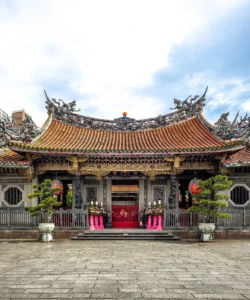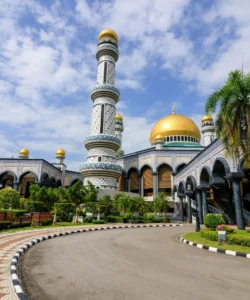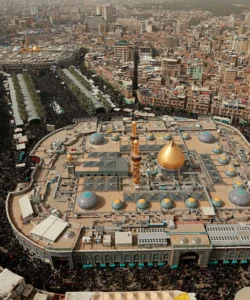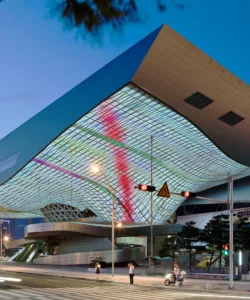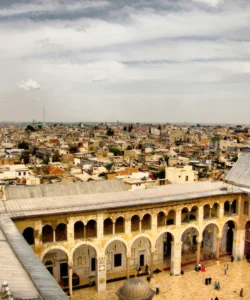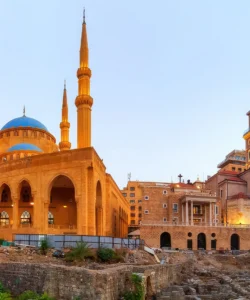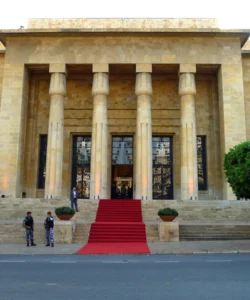The National Museum of Beirut (Arabic: متحف بيروت الوطنيّ, Matḥaf Bayrūt al-waṭanī) is the principal archaeological museum in Lebanon. It showcases an extensive collection of artifacts that trace the country’s history from prehistoric times to the medieval Mamluk period, offering a deep dive into the successive civilizations that have inhabited the region. The museum’s own history is a testament to the country’s resilience, having survived the Lebanese Civil War as a frontline demarcation point and undergoing a major restoration to reopen to the public.
Listen to an introduction to National Museum of Beirut
Name and Address
Name: National Museum of Beirut, often referred to simply as the “National Museum.”
Address: The museum is located on Damascus Street in Beirut, Lebanon. Its address is often cited as: National Museum of Beirut Damascus Street, Mathaf Beirut, Lebanon
How to Get There
The National Museum of Beirut is centrally located and easily accessible within the city.
- By Taxi or Ride-Sharing: This is the most common and direct method. The museum is a well-known landmark, and drivers are familiar with its location.
- By Bus: Beirut has a public bus system, and several routes run along Damascus Street, stopping near the museum.
- By Car: Driving to the museum is possible, but parking can be limited. There are paid parking options in the vicinity.
- On Foot: Depending on your starting point in Beirut, the museum is often within walking distance.
Landscape and Architecture
- Architecture: The museum building itself is an architectural marvel. Constructed between 1930 and 1937 in an Egyptian Revival style, the building features a striking facade. The interior is organized across three levels, showcasing artifacts chronologically. The museum’s design focuses on creating an immersive, uncluttered experience, allowing the magnificent collections to speak for themselves. The building’s resilience is a key part of its story, with bullet holes still visible on the facade from its time on the “Green Line” during the civil war.
- Landscape: The museum is situated in a bustling urban area of Beirut, at the junction of several neighborhoods. It is not set in a natural landscape like a valley or a forest, but rather in a historical and cultural urban landscape, adjacent to other landmarks.
What Makes it Famous
The National Museum of Beirut is famous for several reasons, including its comprehensive collection and its remarkable story of survival.
- Extensive Archaeological Collection: The museum holds a collection of around 100,000 objects, with approximately 1,300 on display. These artifacts cover an immense historical period, from the Lower Paleolithic to the Ottoman era, and include pieces from Phoenician, Roman, and Byzantine civilizations. Notable highlights include a series of human-faced Phoenician sarcophagi, mummified bodies from the Kadisha Valley, and a frescoed Roman tomb.
- Symbol of Resilience: The museum’s story of surviving the Lebanese Civil War is central to its identity. The director of antiquities and his team took extraordinary measures to protect the artifacts, including encasing large items in concrete and hiding smaller ones in the basement. This effort ensured the collection’s survival despite the extensive damage to the building.
- National Heritage: As the principal archaeological museum, it is a key institution for the preservation and celebration of Lebanon’s national heritage and cultural identity.
Differences from the Mim Museum
The National Museum of Beirut and the Mim Museum are both significant cultural institutions in Beirut, but they are fundamentally different in their focus.
- Collection Focus: The National Museum is a broad archaeological museum, showcasing a wide range of artifacts from different periods of human history in Lebanon, including pottery, sculptures, mosaics, and funerary art. In contrast, the Mim Museum (an abbreviation for “Mineral Museum”) is a specialized private museum dedicated exclusively to minerals, with a collection of over 2,000 mineral specimens from around the world.
- History and Ownership: The National Museum is a state-owned institution with a long history dating back to 1942. The Mim Museum is a more recent private institution, opened in 2013, that houses a private collection.
National Museum of Beirut Photos:































